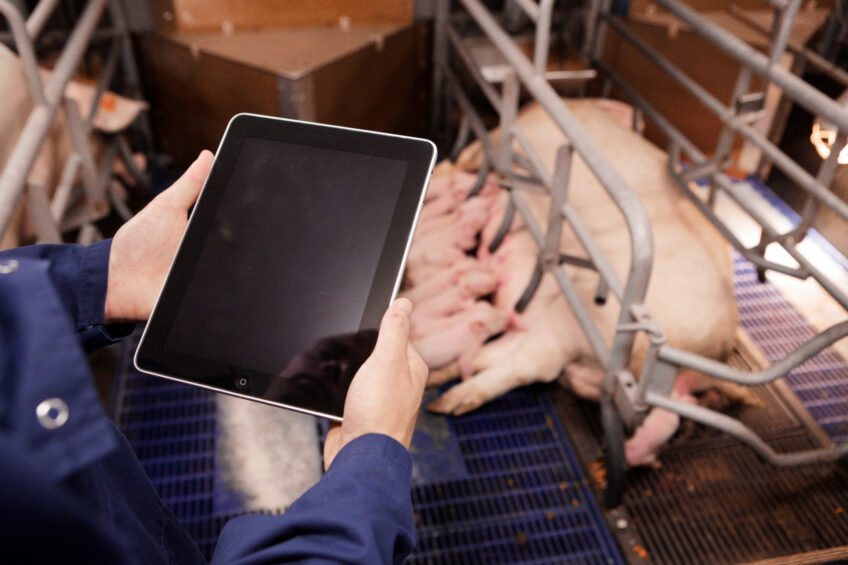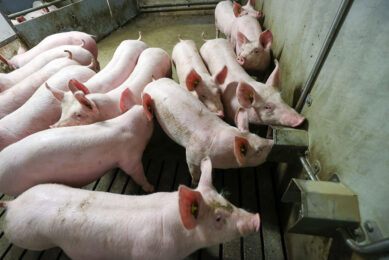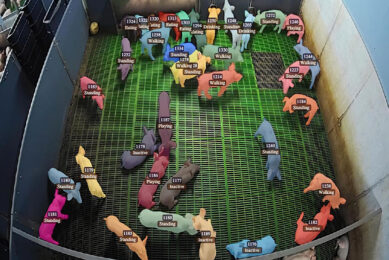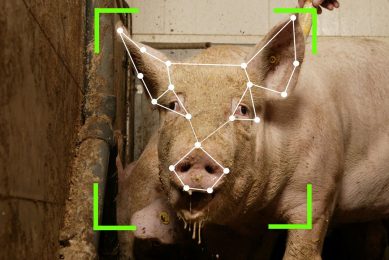AI every day can keep the doctor away. Or not?

Artificial intelligence could revolutionise the pig industry. Yet how exactly it can be reliably applied, is often relatively unclear and perhaps also a touch intimidating. “Telehealth” and “telemedicine” might be an area where easy gains can be made. Can the vet stay at home?
It is not too difficult to think of situations where it would actually come in handy that a veterinarian does not have to physically show up at a farm. Obviously, biosecurity is one of them – after all, every visitor constitutes a transmission risk.
Lack of time
But there is more. Quite a few speakers at the 2025 general meeting of the American Association of Swine Veterinarians (AASV) addressed the theme of “lack of time.” The event, held in San Francisco, from March 1-4, featured various US veterinary practitioners who mentioned the problem of having a hard time trying to disconnect or finding a proper work-life balance. With producers being increasingly spread out across the state, a lot of time is spent on the road. What if there were solutions for this problem – that veterinarians can also help from a distance?
Telehealth
Dr Meredith Petersen is a director of swine health with US National Pork Board (NPB), but before joining the NPB she completed her PhD about telehealth in swine, which she described as “an all-encompassing term for technologies used to deliver a variety of health care.” She emphasised that in these previously described definitions, there is a difference between “telehealth” and “telemedicine,” the latter applying to “the healthcare component of telehealth that includes diagnosis and treatment of disease.”
In her PhD, completed in 2024 at Iowa State University, Dr Petersen discussed various studies to applications of telehealth and discussed their outcomes.
Virtual instruction
A first trial, she said, was to figure out whether or not it would be possible to give virtual instructions to staff in pig houses, to teach them relatively simple actions even though the vet would not be physically present?
To learn more about this, a trial was set up involving 60 students, who never collected oral fluids or blood samples before. They were given instructions in 1 of 3 methods: in person; via a tablet; or via smart glasses, through which a vet at a distance could see what the student could see. Dr Petersen said that the goal was to understand if everyone in the end would be able to perform the tasks well. The virtual instruction trial yielded “a successful transfer of clinical skills” in both cases, so this could be considered when in-person training is not available.
A second trial went deeper. This time, it was all about pig and site evaluation. Telehealth was applied with the help of staff equipped with either a “standard package” (with a tablet that had cellular connection), or a “specialised package” (with a pair of smart glasses and a of course a decent wi-fi connection). The outcomes of the telehealth evaluation were all compared to the evaluation made by a veterinarian doing an inspection in-person on the same day.
There was poor agreement on clinical sign interpretation between on-farm and telemedicine evaluators. […] The agreement improved as clinical sign prevalence increased
Whilst acknowledging that the current techniques work well for basic checklist/auditing cases, there wasn’t always a complete overlap when it came down to comparison of clinical signs. She said, “There was poor agreement on clinical sign interpretation between on-farm and telemedicine evaluators. […] The agreement improved as clinical sign prevalence increased.” She added that the hardware or camera may impact the agreement.
Picking up colours correctly
The second trial had thus shown the reasons why a third trial was needed. Often, colours were poorly picked up by cameras in the telehealth application. In some cases, when a pig had a coloured mark on their bodies, the cameras would not pick that up adequately, which meant that instructions as to identifying certain animals did not always work. She added, “Fans open and close all the time, leading to inconsistent amounts of light coming in. Inconsistent colour transfer may lead to underestimating prevalence of marks. There are interesting dynamics how this relates to pathologic lesions transfer via telemedicine.”
Coloured sprays
How to overcome that issue? Study 3 therefore aimed to make a comparison between the use of several different coloured sprays in 7 different locations on the pig. Which ones would be most transferrable – and which the least? The trial indeed showed “limitations to colour transfer.” A red colour scored best, Dr Petersen said, predominantly at the tail area, as that led to a 60% correct mark interpretation. The study also showed that colour transferred better using high quality (4K) video footage, when compared to 1080p video footage, or a synchronous videoconference.
Telehealth as part of a social network
Delving more into the options of telemedicine was key in a presentation by Dr Nathan Schaefer, on behalf of the platform EveryPig. Dr Schaefer described it as “Facebook of Pigs – a fully integrated data collection and management system in one secure platform.”
Telemedicine offers “real-time, remote collaboration,” he said. “We already have now over 2.8 million digitised barn sheets, helping to train the algorithm.”
He was quick to point out the difference between EveryPig and ChatGPT. He said, “I have done that as well, uploading a picture of a diseased pig in ChatGPT. I was blown away what it was able to do. Yet a picture lacks context. It is not clear whether this is just one pig. For how long it has been like this. That is where our ambition is – to bring that context.”
He summed up various practical examples.
- Its AI feature would be able to do “mortality forecasting.” The system, he said, would predict mortality risks with over a 70% balanced accuracy.
- Obviously, the system can also be used to chat to others. Exchanging questions and answers, supported by pictures and videos, thus is a matter of minutes.
- Another application would be “computer vision,” he said, with the system being able to do automated disease recognition. Continuous feedback from a vet would be needed, to train the system whether a diagnosis is accurate or not.
AI as a partner
One of the places where disease recognition technology is being developed is the University of Illinois. Assistant professor Dr Ben Blair explained what it takes to develop on-farm computer vision systems. One of the projects his team is working on is to create a roadmap to achieve real-time pig analysis in barns – or AI driven tracking. The complexity behind the scenes could be caught in 5 steps:
- Data collection (sensors, images, records);
- Data processing (cleaning, organising);
- Pattern recognition (identifying anomalies);
- Contextualisation (integrating multiple data sources);
- Presentation (clear, actionable insights).
As an example, he said that a high temperature in a barn may or may not mean something. So in order to better understand this, the team needed to build a case scenario, to create AI enhanced decision support. If a system would pick up on unusual movement patterns in the morning, for instance, then by the evening treatment could be implemented with monitoring plan.
Role of the vet does not disappear
For those who might feel overtaken by technology, Dr Blair had a comforting message as well. The role of a veterinarian would not disappear. He said, “We are not there yet. But this is where AI could get us. Vets would have to see AI as a partner. The system generates treatment protocols, and then the vet selects an approach.”











